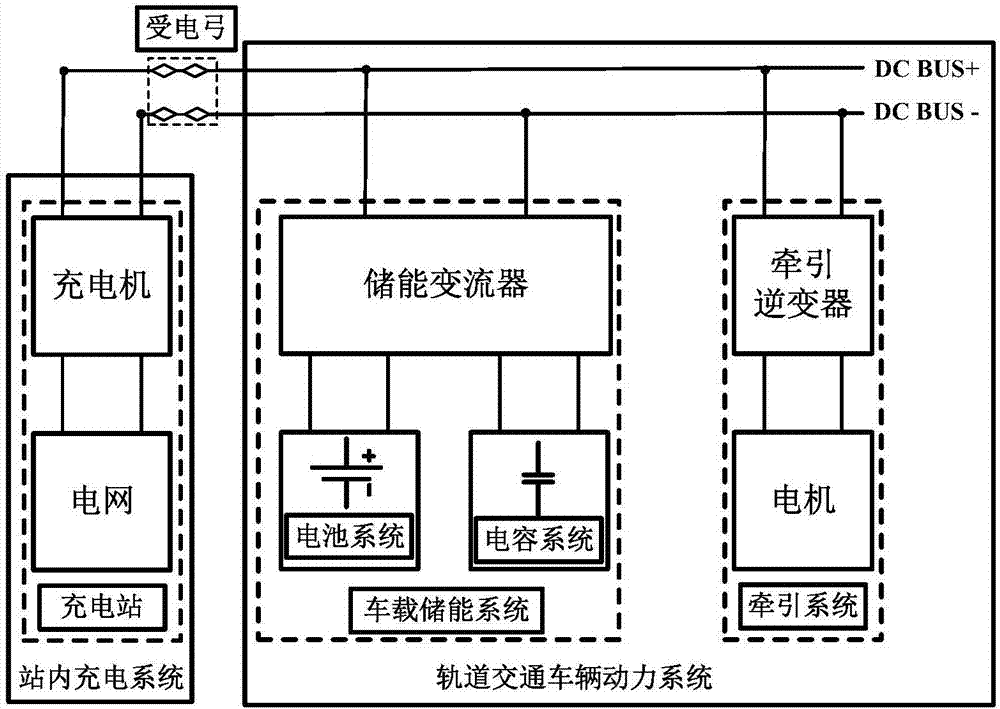Capacity allocation method applied to rail transit vehicle-borne hybrid energy storage system
A hybrid energy storage system and capacity allocation technology, applied in the field of multi-energy coupled energy storage capacity allocation, can solve the problems of energy storage components cost, volume increase, low energy density, inability to balance power and energy performance, etc., to achieve reduction Small weight, optimized configuration, and the effect of improving train operation efficiency
- Summary
- Abstract
- Description
- Claims
- Application Information
AI Technical Summary
Problems solved by technology
Method used
Image
Examples
Embodiment 1
[0047] Embodiment 1. A capacity configuration method applied to a vehicle-mounted hybrid energy storage system for rail transit
[0048] The vehicle-mounted hybrid energy storage system in this embodiment consists of an energy-type energy storage element lithium-ion battery ( figure 1 The battery system in the battery system) and the power type energy storage element supercapacitor ( figure 1 The capacitive system in the) composition.
[0049] A schematic diagram of the structure of the rail transit vehicle-mounted power system and the charging system in the station in this embodiment, such as figure 1 shown.
[0050] Such as figure 2 and image 3 As shown, in this embodiment, the capacity configuration method applied to the vehicle-mounted hybrid energy storage system of rail transit includes the following steps:
[0051] Step 1, define the weight weight factor α and the charging energy weight factor Q:
[0052] The weight weight factor α is defined as the proportion o...
PUM
 Login to View More
Login to View More Abstract
Description
Claims
Application Information
 Login to View More
Login to View More - R&D
- Intellectual Property
- Life Sciences
- Materials
- Tech Scout
- Unparalleled Data Quality
- Higher Quality Content
- 60% Fewer Hallucinations
Browse by: Latest US Patents, China's latest patents, Technical Efficacy Thesaurus, Application Domain, Technology Topic, Popular Technical Reports.
© 2025 PatSnap. All rights reserved.Legal|Privacy policy|Modern Slavery Act Transparency Statement|Sitemap|About US| Contact US: help@patsnap.com



